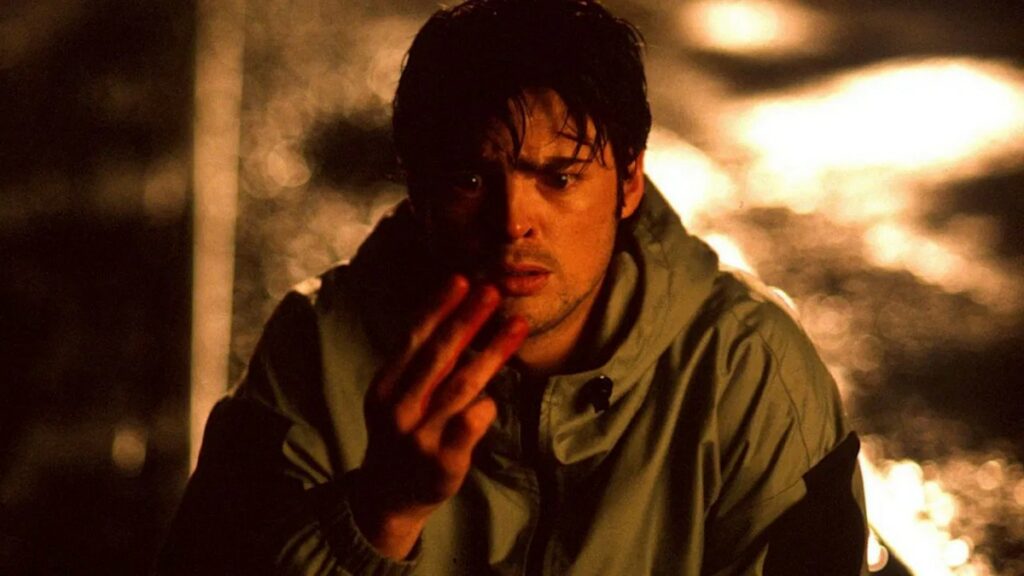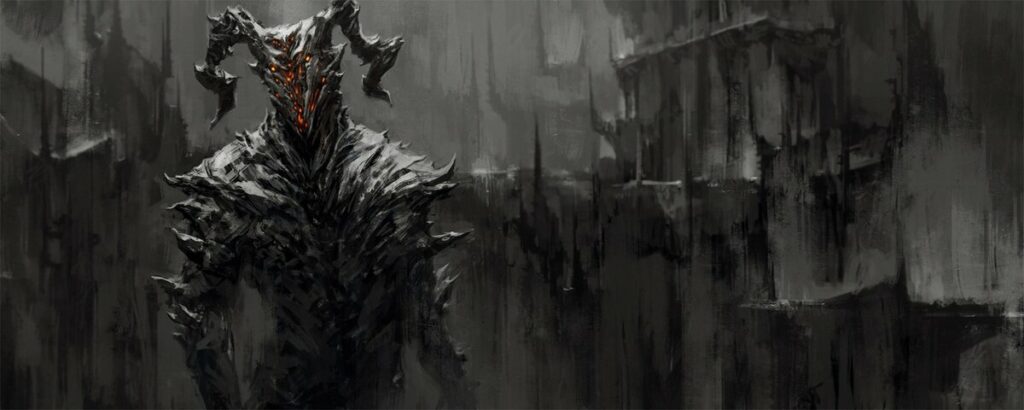Every so often, the independent film scene, particularly within the fertile grounds of genre cinema, throws up a work that pulses with raw energy and unsettling ambition, even if its edges remain rough. Glenn Standring’s 2000 feature debut, The Irrefutable Truth About Demons, emerging from the burgeoning New Zealand film landscape of the time, is precisely such a film. Starring a compellingly intense Karl Urban in an early leading role, this gritty horror tale dives headfirst into paranoia, cultic dread, and the terrifying dissolution of rationality. It’s a film that, despite its evident budgetary constraints and narrative complexities, succeeds in burrowing under the skin, leaving a lingering chill and marking the arrival of distinct talents both in front of and behind the camera.
Kiwi Horror Genesis: Crafting Demons Down Under
Understanding The Irrefutable Truth About Demons requires appreciating its context. Made in New Zealand at the turn of the millennium, it represents the kind of bold, often dark genre filmmaking that the country has become increasingly known for, following in the footsteps of Peter Jackson’s early, gorier works. For writer-director Glenn Standring, this was his first feature film, a challenging undertaking within the often resource-strapped environment of independent production far from Hollywood’s epicentre.

Launching a career with a horror film, especially one dealing with potentially controversial themes of cults and demonic forces, is always a gamble. Yet, it also offers fertile ground for exploring potent psychological states and pushing visual boundaries, often allowing filmmakers to make a strong statement with limited means. Standring seized this opportunity, crafting a film that feels distinctly Kiwi in its setting and certain sensibilities, yet universal in its exploration of fear, doubt, and the fragility of the human psyche when confronted by the inexplicable. The production itself likely faced the typical hurdles of indie filmmaking – tight schedules, limited funding impacting scope and effects – but these constraints often breed ingenuity, forcing a reliance on atmosphere, performance, and clever suggestion over expensive spectacle.
Plot Synopsis: Descent into Paranoia
The film centres on Dr. Harry Ballard (Karl Urban), a cynical anthropologist who has made a name for himself debunking cults and exposing their practices as elaborate hoaxes preying on the vulnerable. His staunch rationalism is, however, violently challenged following the grim death of his brother. Soon after, Harry receives a disturbing videotape depicting bizarre, seemingly demonic rituals performed by members of a black-robed cult he previously investigated and humiliated.
This tape becomes the catalyst for Harry’s spiralling descent into a waking nightmare. He finds himself relentlessly pursued by menacing figures associated with the cult – the charismatic and sinister Le Valliant (Jonathon Hendry) and the unnervingly persistent Bennie (Katie Wolfe). Objects shift impossibly, terrifying visions intrude upon reality, and the threat of physical violence becomes terrifyingly real. Is the cult truly wielding supernatural power to exact revenge, or is Harry, burdened by guilt over his brother’s fate and the lives he may have ruined, finally succumbing to a complete psychotic breakdown?
His only potential ally appears to be Celie (Sally Stockwell), a mysterious woman who seems to understand the forces at play, yet whose own motives remain ambiguous. The narrative masterfully plays with this central question of reality versus delusion. Standring constructs a labyrinthine plot where evidence can be interpreted in multiple ways, forcing both Harry and the audience to constantly question what is real. The “irrefutable truth” of the title becomes deeply ironic, as clarity remains elusive, shrouded in shadows and subjective terror. The film eschews easy answers, sustaining a potent sense of paranoia right through to its disquieting conclusion.

Characters & Performances: Anchored by Urban
A film built on psychological dread relies heavily on its central performance, and The Irrefutable Truth About Demons is fortunate to have Karl Urban as its anchor. In a role that predates his international stardom in franchises like The Lord of the Rings and Star Trek, Urban delivers a fiercely committed and raw performance as Harry Ballard. He convincingly portrays the character’s initial arrogance giving way to gnawing fear, mounting paranoia, and desperate confusion. Urban embodies the physical and mental toll of Harry’s ordeal, making his psychological disintegration feel visceral and compelling. It’s a performance that showcases the intensity and screen presence that would later make him a household name.
The supporting cast effectively populates Harry’s nightmare world. Jonathon Hendry cuts a memorable figure as Le Valliant, the cult leader whose suave exterior masks a chilling menace. He delivers his pronouncements with a theatricality that perfectly suits the leader of a supposedly demonic sect. Katie Wolfe is equally unsettling as Bennie, one of the cult’s primary tormentors, whose relentless pursuit of Harry adds significantly to the sense of inescapable dread. Sally Stockwell brings an enigmatic quality to Celie, the potential ally whose trustworthiness remains in question, further muddying the waters of Harry’s perception. While perhaps constrained by archetypes inherent in the script, the supporting players commit fully to the film’s dark tone, creating a gallery of figures who effectively amplify Harry’s isolation and terror.
Directing and Visuals: Standring’s Vision of Hell
For a debut feature, Glenn Standring directs with a surprising degree of confidence and stylistic flair, particularly in establishing atmosphere. He embraces the low-budget aesthetic, opting for a gritty, often grimy look that enhances the sense of urban decay and moral rot. The cinematography frequently employs low-key lighting, deep shadows, and canted angles to create a disorienting and claustrophobic visual experience. The streets, apartments, and underground lairs of the film’s unnamed city (clearly Wellington, NZ) feel oppressive and threatening.
Standring understands that effective horror often lies in suggestion and psychological tension rather than explicit gore, though the film doesn’t entirely shy away from visceral moments. He makes effective use of sound design to heighten scares and create unease. Where the film does indulge in creature effects or depictions of the demonic, it leans towards practical effects, which, while perhaps showing their budgetary seams at times, possess a tangible, grotesque quality often missing from slicker CGI creations. These moments feel grounded in the film’s grungy reality. Standring proves adept at building suspense and orchestrating unsettling set pieces, demonstrating a clear affinity for the mechanics of the horror genre while aiming for something more intellectually engaging than a simple slasher or creature feature.
Themes: Rationality Under Siege
Beyond the visceral thrills, The Irrefutable Truth About Demons engages with several compelling themes. At its core is the classic horror trope of rationality versus the supernatural. Harry begins as the ultimate skeptic, armed with scientific explanations for phenomena others attribute to the divine or demonic. The film charts the terrifying erosion of this certainty, forcing him (and the audience) to confront the possibility that some truths lie beyond empirical understanding.
The film also explores the nature of cults – their methods of control, the charismatic power of their leaders, and the psychological needs they exploit. Harry’s initial work involved exposing these mechanisms, but he finds himself ensnared by them in a far more terrifying way. Relatedly, the theme of sanity and madness is central. Is Harry genuinely being attacked by demons, or is he constructing this elaborate persecution complex to cope with trauma and guilt? The film cleverly walks this tightrope, suggesting that the “truth” might be subjective or even irrelevant when one’s perception of reality collapses. Guilt, particularly over his brother’s death and the consequences of his own actions, acts as a potential catalyst for either the supernatural events or Harry’s mental breakdown, adding another layer of psychological complexity.
Reception & Legacy: Truth, Lies, and Cult Status
As an indie horror film from New Zealand, The Irrefutable Truth About Demons didn’t achieve widespread theatrical release or significant box office success. Its life truly began on DVD and later streaming platforms, where it gradually found its audience among genre enthusiasts.
- Critical Reception: Reviews were mixed, as is common for ambitious low-budget horror. On Rotten Tomatoes, the film often hovers around a mixed critical consensus (let’s estimate around 55% on the Tomatometer, if enough reviews exist), while audience scores tend to be slightly more forgiving (perhaps 60-65%). Critics like those at GBHBL and various horror outlets often praised its palpable atmosphere, Standring’s confident direction for a debut, Urban’s strong central performance, and the unsettling ambiguity. Conversely, criticisms frequently pointed towards a convoluted plot that could be difficult to follow, pacing issues, and moments where the budget limitations were apparent.
- Audience Reception: User reviews on IMDb (where it might hold a rating around 6.0/10) and Letterboxd reflect this divide. Many horror fans appreciate its gritty tone, psychological depth, practical effects, and downbeat atmosphere, celebrating it as a hidden gem. Others find it confusing, slow, or hampered by its low-budget feel.
- Legacy: Despite its limited initial reach, the film has attained a minor cult status, particularly among fans of New Zealand cinema, psychological horror, and Karl Urban completists eager to see his early work. It stands as a significant calling card for Glenn Standring, who would go on to direct other genre films like Perfect Creature. It remains a testament to the creative potential within low-budget horror when driven by a strong vision and anchored by compelling performances.
Conclusion: An Irrefutable Experiment?
The Irrefutable Truth About Demons is a compelling, if flawed, piece of independent horror filmmaking. Glenn Standring’s debut is rich with atmosphere, driven by a powerhouse performance from Karl Urban, and unafraid to explore complex themes of belief, sanity, and guilt. It successfully creates a pervasive sense of dread and paranoia, leveraging its low budget to craft a gritty, unsettling aesthetic.
While the narrative can occasionally feel dense or convoluted, and some production limitations are visible, the film’s strengths ultimately outweigh its weaknesses for the patient and receptive viewer. It doesn’t offer easy scares or simple resolutions, instead opting for a more cerebral and ambiguous journey into darkness. It stands as a potent example of psychological horror from Down Under, a film that earns its cult following and remains a noteworthy early achievement for both its director and star. For fans of gritty, atmospheric horror that lingers long after the credits roll, seeking out this particular “truth” is highly recommended.
The Irrefutable Truth About Demons (2000): Key Information Summary
| Feature | Details |
|---|---|
| Title | The Irrefutable Truth About Demons |
| Year | 2000 |
| Director | Glenn Standring |
| Country | New Zealand |
| Genre | Horror, Thriller, Mystery |
| Starring | Karl Urban (Harry Ballard), Katie Wolfe, Jonathon Hendry, Sally Stockwell |
| Key Themes | Rationality vs. Supernatural, Sanity/Madness, Cults, Guilt, Paranoia |
| Reception | Mixed critical reviews; Cult appreciation among genre fans |
| Example Ratings | IMDb: ~6.0/10; Rotten Tomatoes: ~55% Critics / ~65% Audience (Estimate) |
| Legacy | Notable NZ indie horror; Glenn Standring’s debut; Early Karl Urban lead |

